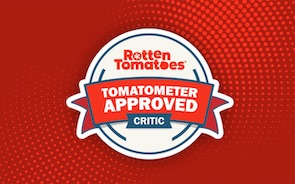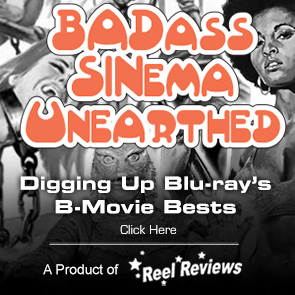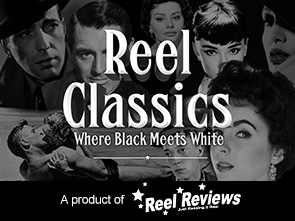{2jtab: Movie Review}
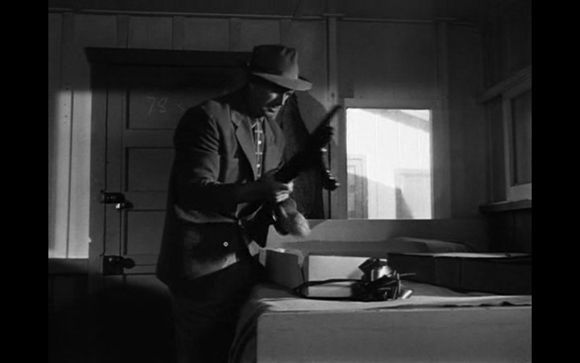
|
![]()
More than half a century since its original release, the announcement made from The Killing still rings loud and clear: director Stanley Kubrick, the auteur of the detached antirealism voice in cinema, has arrived. Part heist picture, part docu-drama, zero emotion; all film noir. It is with the release of this film that Time magazine began their Orson Welles comparisons and, truthfully, the film deserves those comparisons. Sharp, complicated, and always engaging, The Killing is Kubrick’s directorial blueprint for the worldwide acclaim he would soon receive.
Five years in the joint has given Johnny Clay (Sterling Hayden) plenty of time to figure out a way to rob a cool $2 million from the local racetrack. A reformed criminal he is not. A mastermind he is. With seven others involved (a cast that includes Jay C. Flippen, Ted DeCorsia, Joe Sawyer, and a terrific Timothy Carey), Clay pieces together a puzzling robbery in which only he knows the true picture. Of course, their success involves everyone keeping their mouths shut. Thus, the complication of the narrative is established. Spineless George Peatty (Elisha Cook) cannot keep quiet about their plan and spills the beans to his spoiled and unfaithful wife, Sherry (Marie Windsor), who then plans to steal the loot from the criminals with her boyfriend Val (Vince Edwards) once they are free and clear from the track. With nothing but an on-the-fly backup plan, Clay tests the limits of his mastermind in a last chance make or break-all with his own girlfriend.
With a detached and sort of documentary style to the narration, The Killing sparks its fire through a fusion of crackling dialogue and sharp photography. The modern view adds a fierce intelligence to what could have remained a by-the-numbers film noir picture for 1956. Without the weighted emotion, the events of Kubrick’s script play out on the screen with brilliant and calculated purpose. The tension is ticking and, even down to its last three or four seconds, creates an uneasiness that is as alarming and as unsettling as the final frame of the picture.
Based on Lionel White’s book entitled Clean Break, Kubrick and dialogue writer Jim Thompson (The Killer Inside Me) make an inspired time of adapting the material and maintaining its syncopated sequences. The dark and criminals-on-the-run themes are there and so are the femme fatales, yet kicking inside its modern gut is an appeal to the immediate distanced viewer. “Yes, these events happened,” says the movie and, “yes, these are dangerous times,” it says again, yet “you can’t look away.” What does that make you? That seems to be the idea behind the docu-dramatized events of The Killing.
The whole thing comes across as an episode of True Crime television. Fictionalized portrayals of true-to-life events and never does it insult or take its audience for granted. The camera does a grand time of perfectly capturing the events and the art of Kubrick’s world with such rich patterns that it’s hard to tell who the real star of the film is. Hayden richly underplays the character of Clay to great effect. It’s a career high for him and, with his final line before credits role, his performance is a great example of muted (but understood) characterization.
Kubrick might have finally launched his career with his next feature, Paths of Glory, but it is here, knee-deep in film noir, where his audience and fans – for the first time – bare witness to the budding formulas and ideas that would soon be at the heart of such classics like Dr. Strangelove and A Clockwork Orange.
The Killing, now available on blu-ray, is as classic as Kubrick himself.
{2jtab: Film Details}
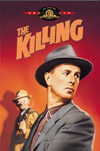 MPAA Rating: This title has not been rated by the MPAA.
MPAA Rating: This title has not been rated by the MPAA.
Director: Stanley Kubrick
Writer: Stanley Kubrick
Cast: Sterling Hayden; Coleen Gray; Vince Edwards; Elisha Cook Jr.
Genre: Crime | Noir | Thriller
Tagline: In All Its Fury and Violence
Memorable Movie Quote: "You like money. You've got a great big dollar sign there where most women have a heart. "
Distributor: United Artists
Release Date: June 6, 1956
DVD/Blu-ray Release Date: August 16, 2011
Synopsis: The Killing was director Stanley Kubrick's first major film effort -- though, like Kubrick's earlier films, it was economically produced with an inexpensive cast. In a variation of his Asphalt Jungle role, Sterling Hayden plays veteran criminal Johnny Clay, planning one last big heist before settling down to a respectable marriage with Fay (Colleen Gray). Teaming with several cohorts, Johnny masterminds a racetrack robbery. The basic flaw is that all the crooks involved are losers and small-timers who find themselves in way over their heads despite their supposed cleverness. None of the participants is more pathetic than George Peatty (Elisha Cook Jr.), who is goaded into the robbery by his covetous and far-from-faithful wife (Marie Windsor). As in a Greek tragedy, Johnny's best-laid schemes go awry. Prominently featured in the cast of The Killing are offbeat character actors Tim Carey and Joe Turkel, who'd show up with equally showy roles in future Kubrick productions. The Killing is based on the novel Clean Break by Lionel White.
{2jtab: Blu-ray Review}
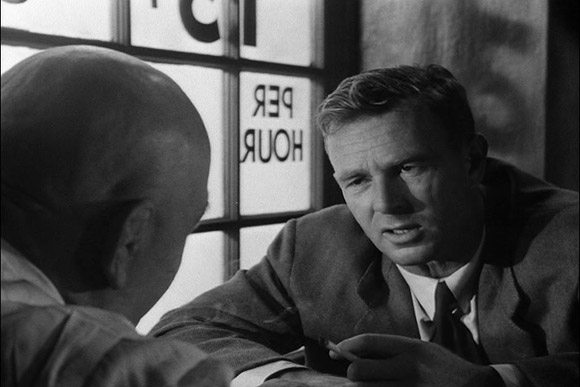
|
||||||||||||||||||
Blu-ray Details:
Available on Blu-ray - August 16, 2011
Screen Formats: 1.67:1
Subtitles: English; SDH
Audio: English: LPCM Mono; English: Dolby Digital Mono
Discs: 50GB Blu-ray Disc; Single disc (1 BD)
Playback: Locked Region A
Presented in its original aspect ratio of 1.66:1, the 1080p transfer from Criterion is free of any warts or blisters. The image is sharp and a constantly engaging example of black-and-white photography. There’s only marginal problems with contrast and lines as there is a lack of depth to some of the scenes and, with little preserved grain, it feels a little flat at times. However, this could be due to the fact that the film was a low-budget affair from 1956 and easily dismissible. The sound is a one-speaker workout. Presented in its PCM 1.0 track, collectors shouldn’t expect much from it; another cheap fix for its low-budget status.
Supplements:
Commentary:
- None
Special Features:
From its interview with producer James B. Harris to its inclusion of Killer’s Kiss (Kubrick’s first film), Criterion has got the supplemental material covered. Hands down the finest handling of films comes from Criterion. The Killing is no less magical than any of their other releases. Interviews with Jon Polito about Jim Thompson’s career are great additions and the edited together pieces from a 1984 interview with Sterling Hayden are full of fascinating bits about working with the young Kubrick. The 21-page booklet that comes with the set includes an essay written by film archivist Haden Guest and goes into great detail about Kubrick’s celebration of antirealism.
The breakdown is as follows:
- Killer’s Kiss (68 min)
- Interview with James B. Harris (22 min)
- Interview with Sterling Hayden (24 min)
- Interview with Jon Polito (19 min)
- Theatrical Trailer for ‘The Killing’
- Theatrical Trailer for ‘Killer’s Kiss’
- Video Critique from Geoffrey O’Brien (10 min)
{2jtab: Trailer}
{/2jtabs}














